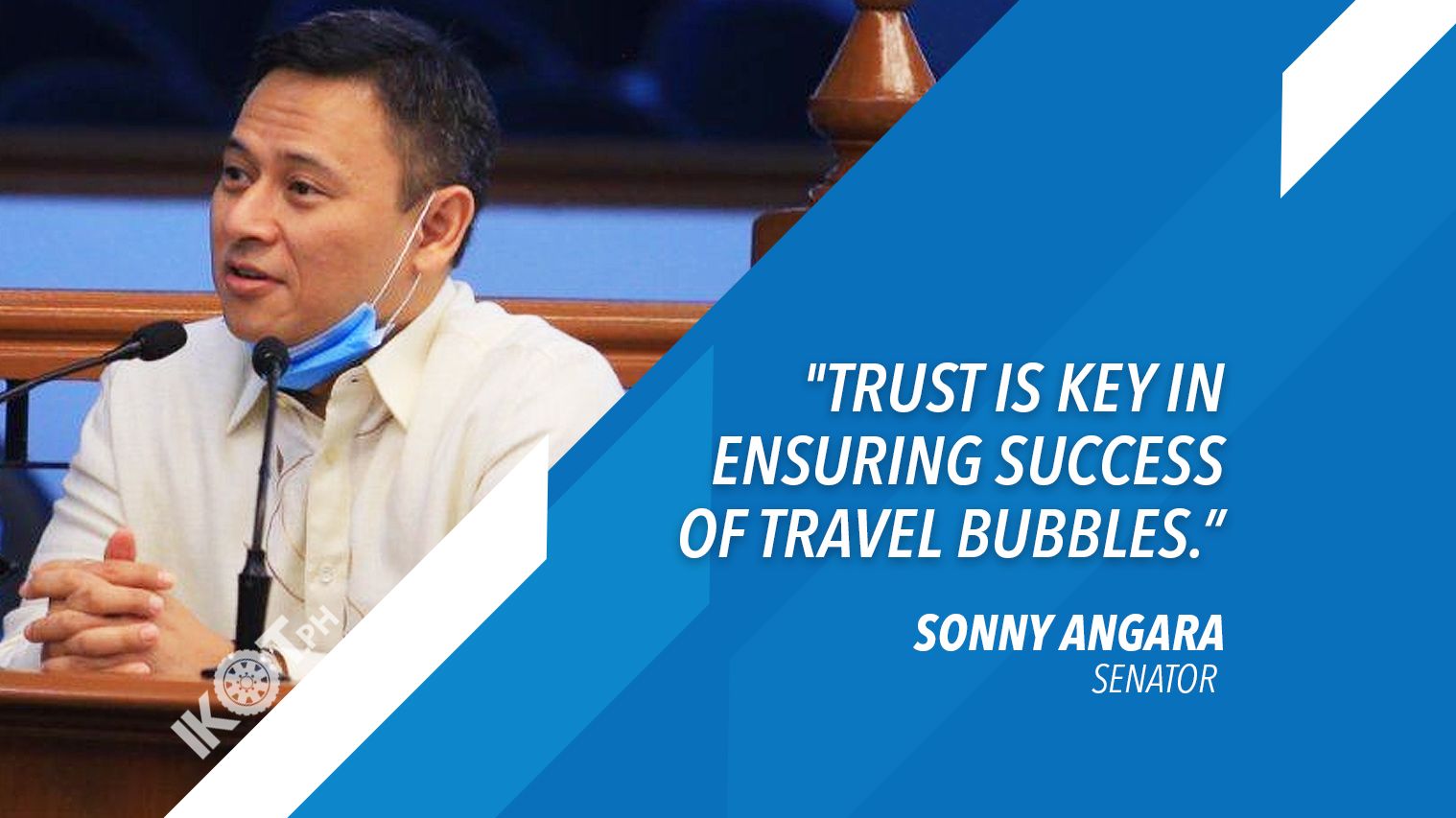To help the country’s tourism industry in recovering from the lockdowns imposed due to the coronavirus disease (COVID-19) pandemic, Senator Sonny Angara said the government should seriously consider making “travel bubbles” with select countries.
Angara urged the Department of Tourism (DOT) to work with the Department of Health, Department of Transportation and the Union of Local Authorities of the Philippines on how to implement these travel bubbles, including choosing which countries would take part and which local destinations would be included.
Travel bubbles, also known as “corona corridors” or travel bridges, refer to the arrangements between countries for travelers to enter each other’s borders without the need for strict quarantines or at least very minimal periods of quarantines.
The idea of creating travel bubbles has been raised by the veteran lawmaker as early as May this year in his comments to the 7th weekly report of Malacañang to Congress on the implementation of the Bayanihan to Heal as One Act as a way to help the tourism industry, which has been completely shut down for the past three months.
“Many countries are now exploring the concept of travel bubbles as a way to safely open up their doors to visitors.”
“Many countries are now exploring the concept of travel bubbles as a way to safely open up their doors to visitors, such as businessmen and tourists, from select countries in order to generate economic activity in the tourism industry,” the seasoned lawmaker said.
Countries such as Thailand, Singapore, China, South Korea, Vietnam, Japan, Australia and New Zealand are all exploring the idea of travel bubbles now that their economies are starting to open up again after going through lockdowns due to the pandemic.
Tourism is a major contributor to the Philippine economy, generating a record high of $9.31 billion (P465 billion) in 2019.
The Philippine Statistics Authority also noted that tourism represents 12.7 percent of the gross domestic product.
The sector has been among the hardest hit by the pandemic as all travel in and out of the country was halted as part of the government’s efforts to contain the spread of COVID-19.
Based on a survey conducted by the National Economic and Development Authority and the Department of Finance, the tourism was the second hardest hit industry in terms of income behind arts, entertainment and recreation.
The same survey indicated that tourism was the fourth hardest hit sector in terms of job losses.
For the first four months of 2020, the DOT reported that tourism revenues stood at a mere P79.8 billion, down from the P180.5 billion recorded over the same period in 2019.
The senator noted that the process of operationalizing these travel bubbles will not be easy as it involves a lot of requirements in order to ensure its success.
This includes ensuring the improvement of hospital facilities and medical services at the destinations that will be part of the bubble.
“The only way our potential partners will agree to travel bubble agreements with us is if we are able to show that we are successfully containing the spread of COVID-19.”
“Trust is key in ensuring success of travel bubbles. The only way our potential partners will agree to travel bubble agreements with us is if we are able to show that we are successfully containing the spread of COVID-19 in the country,” he said.
“This is why the conduct of mass testing and an effective contact tracing system should be in place already. We continue to record a lot of fresh cases daily and until we can bring these numbers down, confidence of tourists entering the country will be an issue,” Angara stressed.
Once the country is able to control the spread of COVID-19 and bring down the number of fresh cases, then he said arrangements for travel to popular tourist destinations such as Boracay and Bohol under the travel bubble concept could be undertaken already.
Apart from tourism, the travel bubbles would also cater to businessmen, medical and sports tourists, who would limit their visits to specific areas and have limited contact with locals.
Angara urged the DOT to finalize capacity programs for health and wellness tourism as another way to help the tourism industry.
Based on the 2014-2015 Medical Tourism Index prepared by the International Healthcare Research Center and the Medical Tourism Association, the Philippines was the eighth top medical tourism destination in the world.

